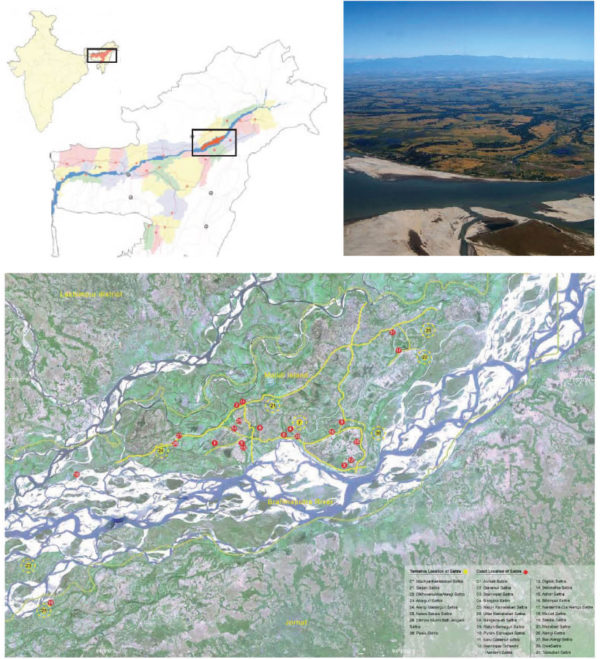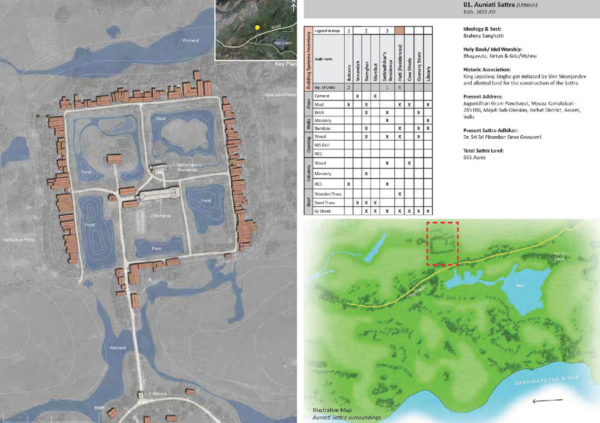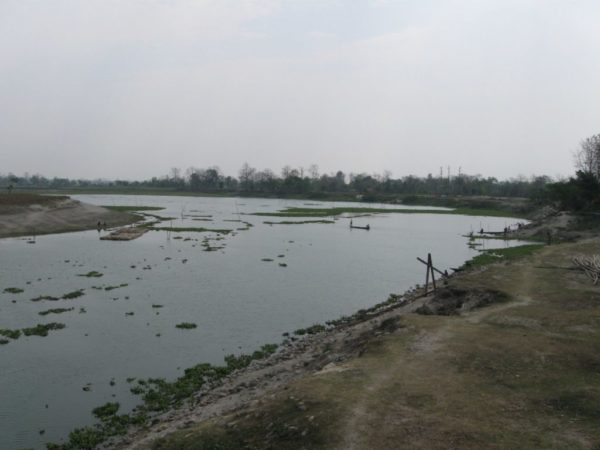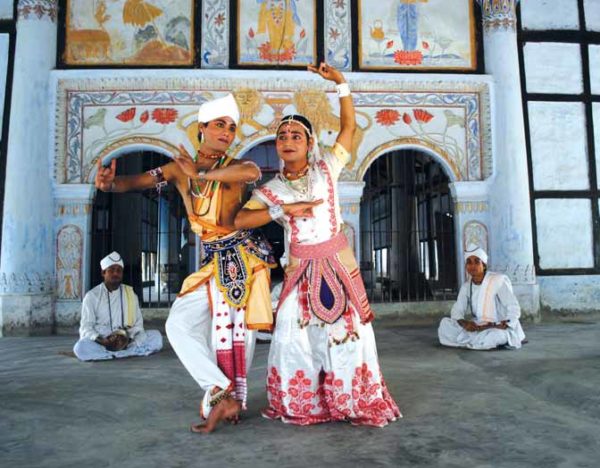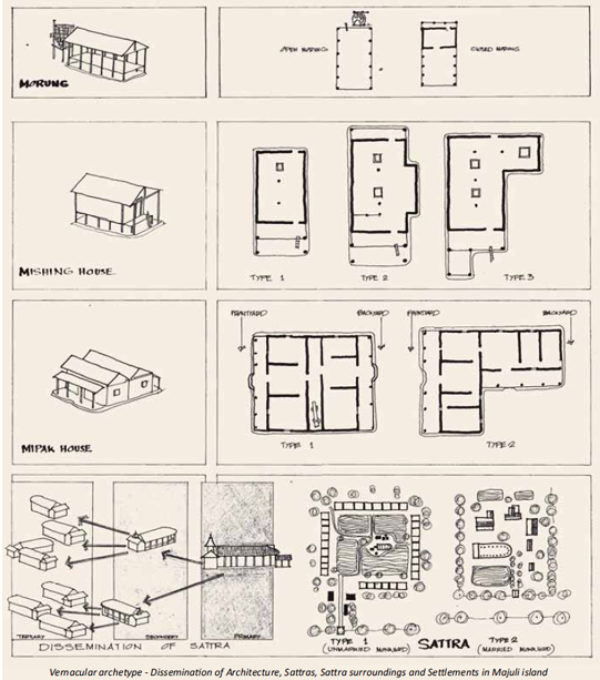Majuli cultural Landscape Dossier, Assam
The Archeological Survey of India (ASI) has nominated the region of Majuli for inscription into the World Heritage List as a Cultural Landscape for its unique natural environment and for the social systems in play on the island. The Outstanding Universal Value of the Majuli Island is represented by its cross cultural ethnic diversity, its religious ethos and the ability of the people of the island to adapt their existence to the changing dynamics of its ecosystem over centuries. They have evolved a lifestyle incorporating traditional knowledge systems regarding their main occupations of agriculture, sericulture, pisciculture etc. and an acute understanding of the available resources (such as the river system, climate, diverse vegetation etc.). The living culture of the people has evolved due to dynamic interaction within the religious Sattras of diverse
ethnic groups and their customary laws which were set in symbiotic harmony with the natural resources thereby making it perhaps the only such example in the world. This continuity of traditional knowledge systems where in the human as well as the material resource base is maintained,
and their integral role in the daily activities and occupations of the inhabitants of the island
The island is more under threat by flood and erosion by the Brahmaputra River than external and modern influences, mainly because of its limited accessibility (only by ferry). Floods are an annual and regular occurrence on the site for centuries, incorporated into the lifestyles and occupation
cycles of the inhabitants. Rich alluvial soil gets deposited during the flooding season which is the backbone of the agricultural community and the wetlands formed are an integral part of the ecosystem of Majuli. However, regular earthquakes, in particular the earthquake of 1950 which caused the raising of the river bed, have increased the intensity and occurrence of the floods. Erosion along the banks of the river has increased manifold and the geographical area of the island has reduced significantly, almost by half since 1950. Displacement of people and increase in population has increased the pressure on the ecosystem as well as the centuries old cultural and
social system of Majuli. It has increased the urgency of tThe island is more under threat by flood and erosion by the Brahmaputra River than external and modern influences, mainly because of its limited accessibility (only by ferry). Floods are an annual and regular occurrence on the site for centuries, incorporated into the lifestyles and occupation cycles of the inhabitants. Rich alluvial soil gets deposited during the flooding season which is the backbone of the agricultural community and the wetlands formed are an integral part of the ecosystem of Majuli. However, regular earthquakes, in particular the earthquake of 1950 which caused the raising of the river bed, have increased the intensity and occurrence of the floods. Erosion along the banks of the river has increased manifold and the geographical area of the island has reduced significantly, almost by half since 1950. Displacement of people and increase in population has increased the pressure on the ecosystem as well as the centuries old cultural and social system of Majuli. It has increased the urgency of the protection of the region and its heritage components.he protection of the region and its heritage components.volved as the cradle of Assamese culture over the centuries.
Year:
2014
Paper presented at Venue of Seminar and Country:
1.Conference on Cultural Landscape and Prospective World, Seoul National University, Seoul, S.Korea
- Conference on Culture and Heritage Conservation- Community Participation, Kathamandu, Nepal
- ICOMOS General Assembly Symposium, India
Prepared For :
Archaeological Survey of India
Research Team:
GSV Suryanarayanamurthy, Abdul Bari, Bhamidipati Kiran, Bhaskarreddy, Shikha Narayan, Hussain, Swapna, Mahesh, Asia, K.Nagaraju, Shankar
Lead author / Project Architect:
GSV Suryanarayanamurthy


